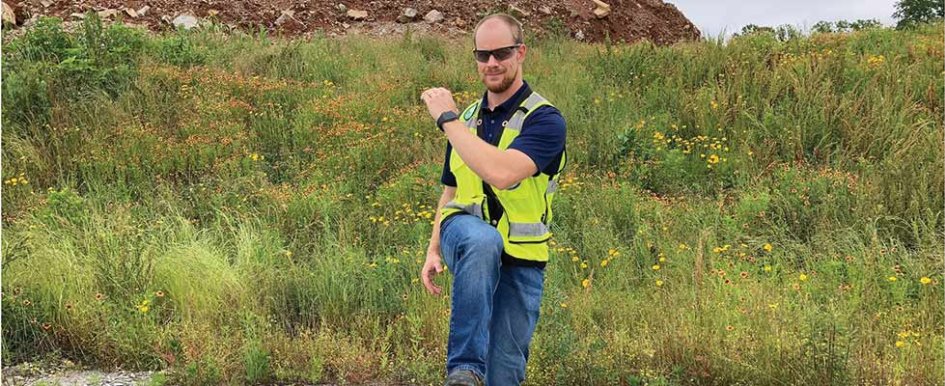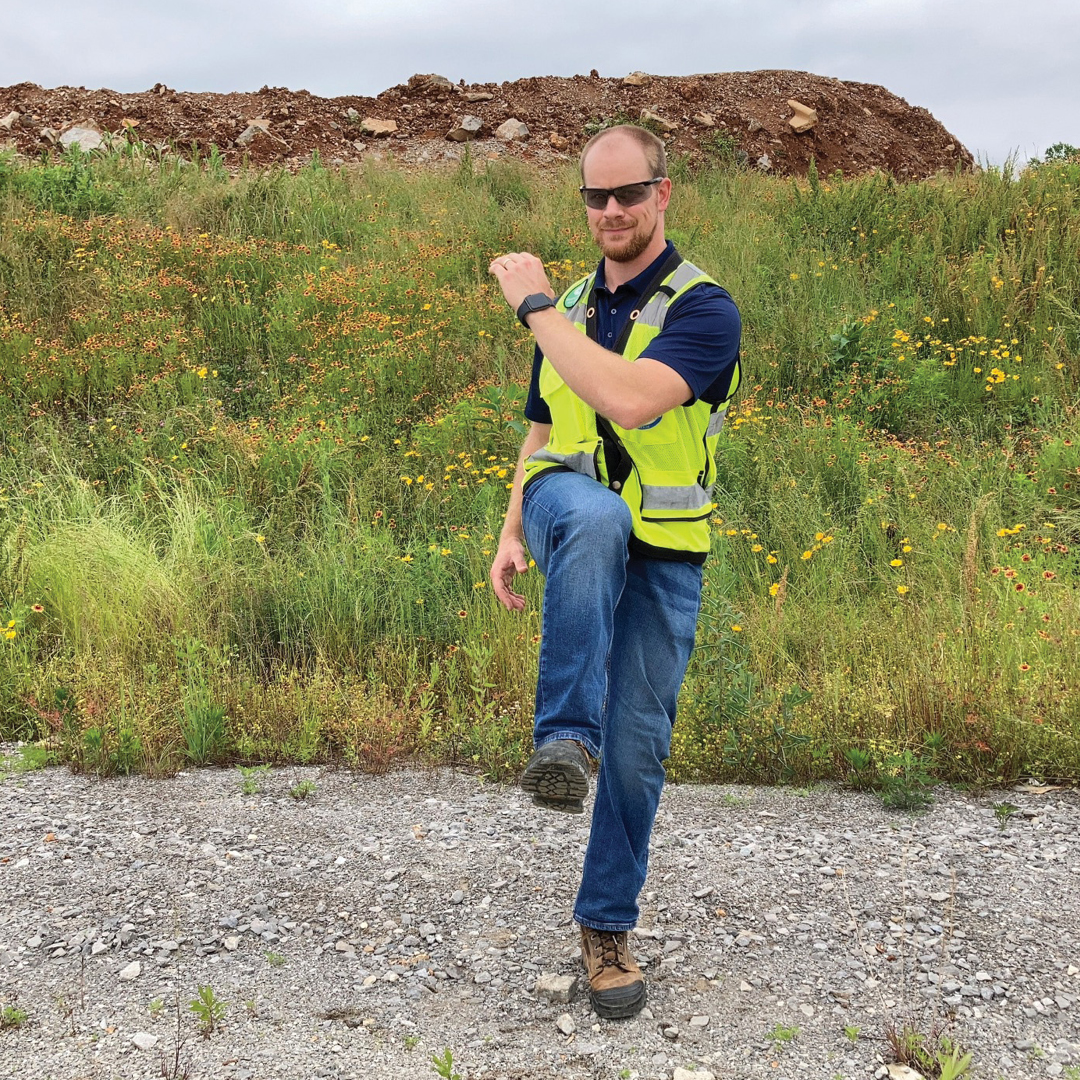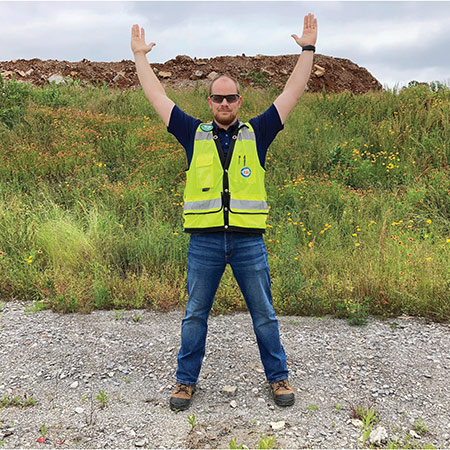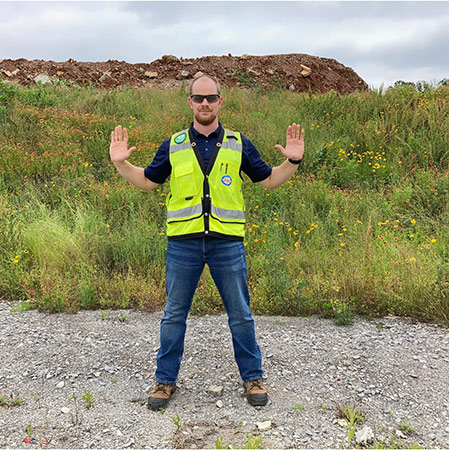
The early morning sky awakens as the first rays of sunlight stretch across the jobsite. Workers begin gathering in small groups for their morning safety briefings and daily task review.
Toward the end of a particular briefing, the foreman casually volunteers a crew member to lead the group in stretches. The worker is caught off guard and reluctantly rushes through a few random stretches. The morning safety briefing ends, and the crew slowly shuffles away while still rubbing sleep from their eyes.
Does this sound like a typical morning at your jobsite?
Over the past eight years, I have consulted and led well-being programs at large commercial construction project sites and manufacturing plants. I have conducted hundreds of workplace stretching sessions for groups as small as three and as large as 500 workers.
Every company’s safety culture, employee needs and experience with stretching programs will vary. The following business case and suggestions are based on the available research, best practices and my experience in the field.
The Business Case for a Stretching Program
An effective stretching program can provide benefits to both individual workers and their companies. When individual workers improve physical and mental resilience, their companies can experience reduced claims and operations costs while improving their reputations and profit margins.
The costs associated with workplace injuries are staggering. According to the Liberty Mutual 2024 Workplace Safety Index: Construction report, “The U.S. construction industry loses nearly $10.7 billion a year to serious, nonfatal workplace injuries.” Musculoskeletal (MSK) injuries make up more than 20% of that overall cost.
Musculoskeletal injuries often occur from overexertion, awkward postures and repeated exposures. These acute and chronic events create pain or injury in soft tissues like muscles, tendons, ligaments and nerves. The National Safety Council reports that sprains, strains and tears make up 72% of these MSK injuries. The most common areas affected are the back, shoulders and knees.
The Occupational Safety and Health Administration’s (OSHA) “$afety Pays Program” calculator estimates a single muscle strain or ligament sprain can cause approximately $30,000 in direct costs like workers’ compensation, medical expenses and legal fees.
This type of injury could indirectly cost the organization an additional $35,000 in lost productivity, employee turnover, company reputation damage, staff coverage, reduced morale and absenteeism. If a company uses a stretching program that reduces the risk of MSK injuries, they could prevent up to $65,000 of costs per claim.
In addition to reducing injury claims costs, stretching programs have psychosocial advantages. Exercise has been shown to reduce stress, combat fatigue and enhance focus through factors like the release of endorphins. Exercising as a group can also lead to higher team morale and camaraderie. These mental and social benefits could positively influence worker mental processes and decision-making for less risk-taking.
Good things happen when companies realign their policies and processes to prioritize their workers. At the end of the day, it’s the right thing to do. Workers feel valued when their needs are being addressed, which results in higher job satisfaction, retention, productivity and overall morale. For the company, that often translates into a better company reputation and larger profits.
As an example, a regional heavy equipment distributor revamped its stretching program as part of a larger safety initiative to reduce recordable incidents in 2024. The distributor experienced a 7% decrease in year-over-year recordable incidents. While this is not entirely attributable to the stretching program, the leadership team expressed that it played an important
role in their overall safety culture and year-end results.

Steps for a Best Practice Stretching Program
Leadership and safety teams can establish productive stretching programs through careful planning and implementation. Whether this is a new initiative or a way to revitalize an existing program, these six steps can elevate your program from a “check-the-box” activity to a life-changing strategic initiative.
1. Establish Leadership Support
One of the most important parts of any jobsite initiative is leadership buy-in. Having full support from the project managers, superintendents and foremen will set the program up for success.
Regular program encouragement from the leadership teams will let employees know that participation during company time is acceptable. When leaders are on the jobsite, they should also set the example and complete the stretches with their teams. The stretching program will have stronger momentum and participation with leadership support.
2. Champion Selection & Training
Remember the ill-prepared crew member from the earlier example? They were not set up for success, and it led to a poorly executed stretching session.
Take time to evaluate your crews and select “champions” who will lead the stretching routine on a regular basis. Your best-case scenario would be choosing someone who is well-respected and has a passion for health and fitness.
Train the selected champions so they feel comfortable in front of their peers. Train them on proper form, and provide them with a list of the exercises for reference.
The champions’ willingness to lead the exercises, a positive attitude and proper training will make a tremendous difference in the program’s daily and long-term effectiveness.


3. Exercise Selection
The primary physical outcomes for a stretching program should be to increase blood flow, raise heart rate, improve coordination, and warm up the muscles and ligaments for activity.
One of the best ways to achieve these results is using dynamic exercises. Different from static stretching (when tension on a muscle is held in one position), dynamic stretching moves the body part or limb through a larger range of motion for several repetitions.
Common examples include squats, arm circles, trunk twists, standing calf raises and side lunges. Utilizing total body exercises drastically increases the heart rate, targets multiple muscles groups and improves coordination.
Start by selecting six to eight movements targeting various high-risk body areas like the back, shoulders and legs. Choose a rep count that allows for about 20-60 seconds of movement per exercise. For example, completing 12 squats should take about 30 seconds.
My personal favorites exercises for stretch breaks include “Y to W” and “cross-marching” (see Images 1 and 2). Below are additional general considerations:
- Plan for a wide range of ability levels.
- Exercises should be completed from a standing position.
- Implement six to eight exercises in each session with some rest between exercises as needed.
- Use total body dynamic exercises when possible.
4. Consistency & Uniformity
Establish a regular cadence for when the stretching program should take place. Employees may begin to feel that the program is unimportant if its cadence is random or becomes disrupted. A common practice is to complete it every morning at a set time. Some companies have found success in a second stretch break after lunch as well.
Another key consideration is creating uniformity in the stretching program across the entire organization. The program should be familiar when workers relocate or join other jobsites within your organization. Employees will continue engaging in the stretching program when it’s viewed as part of the company’s culture.
5. Launch & Promotion
The initial launch and company promotion is a critical component for setting the tone for ongoing participation. Start the stretching program with strong momentum by emphasizing it as an exciting opportunity and company focus. Try these ideas to kick off a new program:
- Send a program launch email to all managers and employees.
- Host a kickoff event featuring senior leadership.
- Review the program at staff and department meetings.
6. Evaluate & Fine-Tune
A key component of a long-term program is collecting feedback and adjusting as necessary. This should not be a “set it and forget it” type of program.
One way to evaluate your program is by conducting a survey before launching it to establish a baseline. Then evaluate progress over time by comparing results.
Potential changes and action items may include periodically changing the stretches, altering the timing during the day and rotating the stretching champions.
Imagine it is a few months from now, and your team has implemented a new stretching program based on these best practices and your company’s needs. Toward the end of an early morning safety briefing, the foreman turns to their stretching champion and asks, “You ready?”
The stretching champion confidently steps out as the crew members circle around. The champion energetically leads the group through eight dynamic exercises. The crew begins to come alive as stiff bodies loosen, heart rates climb and mental focus sharpens. They leave the morning safety briefing with positive energy, feeling ready to take on the rest of their workday.
